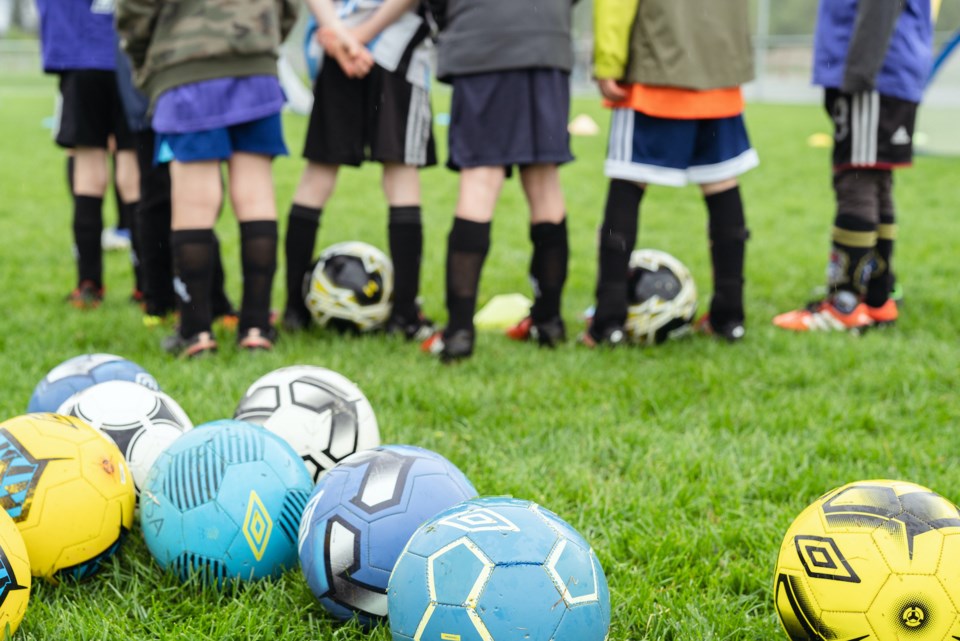A recent email from my daughter’s soccer league made me question how we can possibly keep kids in sport at a time when athletes are being asked to commit the better part of a year to playing one thing—and one thing only—to the exclusion of everything else.
It was presented as a good-news email: the competitive season had been extended by two weeks to make up for the games lost to the cold snap and snowfall in January.
Once those weeks are tacked on it will bring the tally to about seven months, with two practices and one game a week. The league breaks for the Thanksgiving long weekend, which is when their tournament is held, and for Christmas break before picking it up again. The club (based in the Lower Mainland) also really wants us to sign up for spring soccer, and has suggested it is more or less mandatory to sign up to guarantee a spot on the team next year. That means practices and games through to the end of June, including two tournaments on long weekends. That’s 10 months of soccer, well over 30 games in total.
If you’re one of the few kids on a high-performance track, and/or you love soccer more than anything, this is probably great news. But if you’re more recreationally minded, only “like” soccer, or want to play other sports, it becomes a major all-or-nothing commitment. Some clubs do allow practice-only players, including Whistler, to accommodate multisport athletes, but if you want to play a reasonable number of games in the fall then you have no choice but to commit to the whole season. Or quit.
Whether you’re in Tier 3 or three steps up in the super-competitive Metro divisions, the duration is the same. There is no league option that ends in November or December so recreational kids can shift to volleyball or basketball or hockey or ski-racing. Some athletes can play a second sport if the competing practice and competition schedule allow for it, but it’s not always possible. It’s also a huge commitment that isn’t for everyone.
It seems like a lot. I grew up in Ontario where the winters are colder, and as a result we had clear seasons for everything—fall was for football and/or soccer; winter was for basketball, hockey and volleyball; spring was for rugby, baseball and lacrosse. There was a little bit of overlap sometimes, but mostly one season ended and another one began. You never got tired of playing the same sport.
There is a wealth of sports science that backs the “multisport” approach, which encourages kids to play a lot of different sports. The benefits include fewer injuries from repetitive strain or overuse, less burnout, the ability to meet and socialize with more kids, exposure to different kinds of conditioning and coaching, development of different motor skills and muscle groups, and—this is the big one—you’re not putting all your athletic eggs in the same sports basket. If you play five sports instead of just one, you’re more likely to stay active in one or more of them as you get older.
A lot of kids—girls in particular—end up quitting competitive sport in their teen years. According to a 2020 study by Canadian Women in Sport, participation rates in athletics drops off from 58 per cent to 25 per cent between the ages of nine and 23, with the biggest drop-off occurring around the specialization stage (ages 15 and 16) where kids are asked to pick one sport and stick with it. Only 18 per cent of all women over 16 are active in sport.
One of the reasons cited for women leaving sports is it becomes a negative experience. It’s not as fun and friendly anymore, and the narrow focus on competition can lead to bullying and benching.
And yet, for all the science backing multisport, and the declining enrolment in sports over time, a lot of different sports and leagues continue to emphasize competition over recreation, commitment over participation, single sport over multisport.
Hockey legend Wayne Gretzky is himself a vocal supporter of the multisport approach, saying: “I really think that my track-and-field and my baseball and my box lacrosse were all beneficial to me becoming the hockey player I became, because not only did all those sports help me to be a better player, but I was really excited at the end of April to start baseball and lacrosse... (and) by September I was ecstatic to get back to hockey, and I never got tired of it.”
While it’s great the milder winters on the south coast of B.C. let you play outside all year, you’d think that would give the province a huge advantage in high-performance sports like soccer. That’s not the case: the men’s national soccer team that went to Japan in October brought 23 players—none grew up in B.C. The women’s 2023 World Cup squad of 23 players had just four athletes from B.C.
Some of the girls on my daughter’s very recreational Tier 2 team seem over it at this point, far less excited to play than they were a few months ago. A handful of girls are driven to play, while the rest are along for the ride. The injuries are piling up as well. In my view, they need a break, both mentally and physically.
Participation in sport shouldn’t be all or nothing. Maybe if sports and leagues offered more recreational options with reduced commitments, more kids would stay in the game. If that isn’t the core goal of our entire sports system, then I have no idea what we’re doing.



